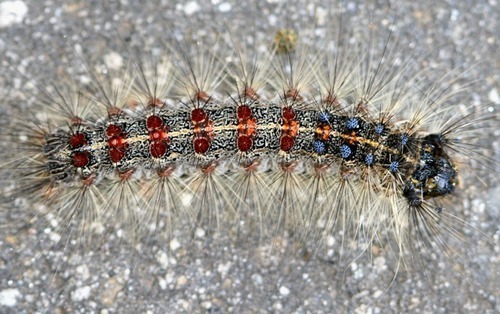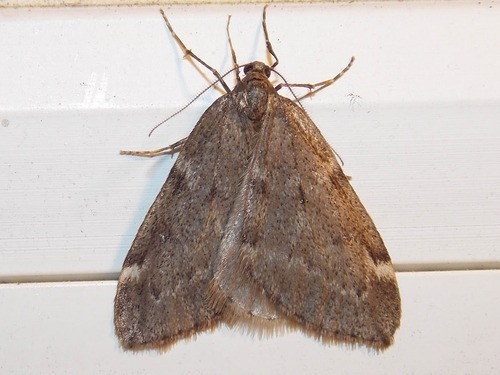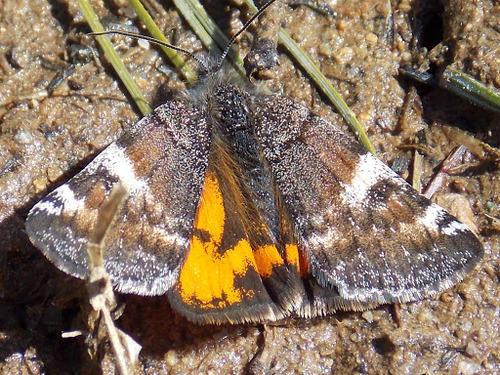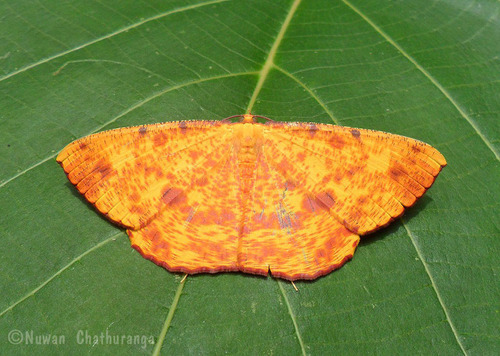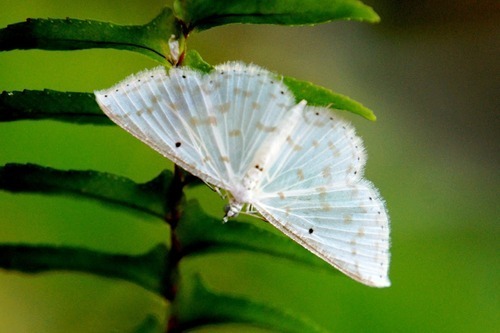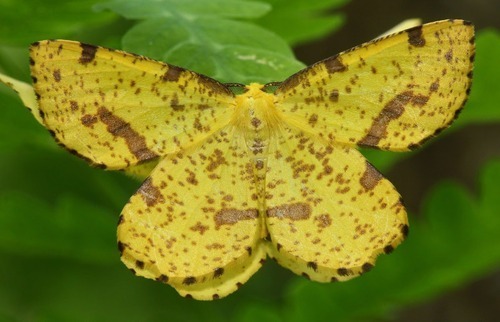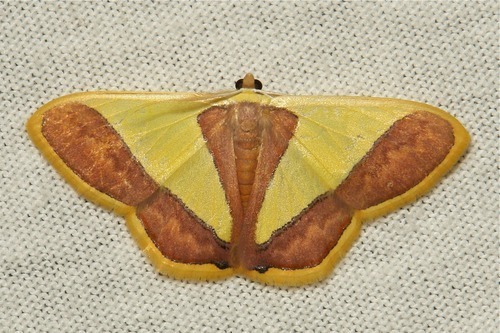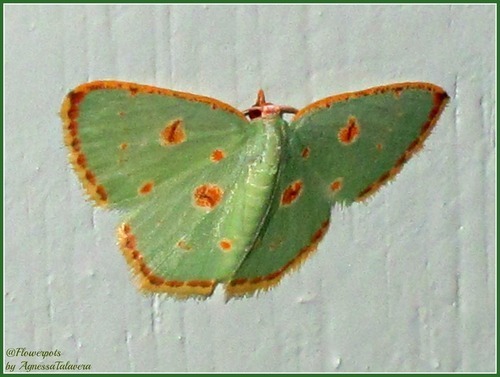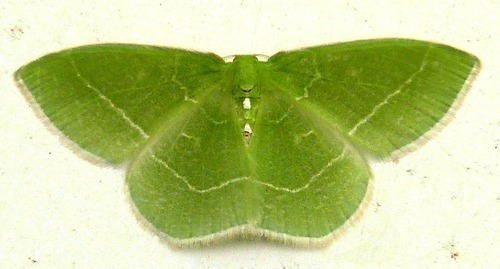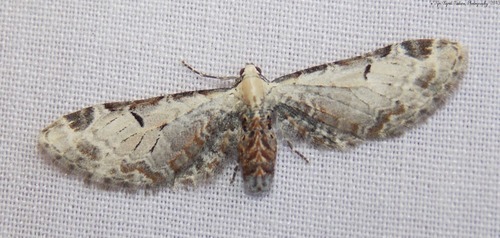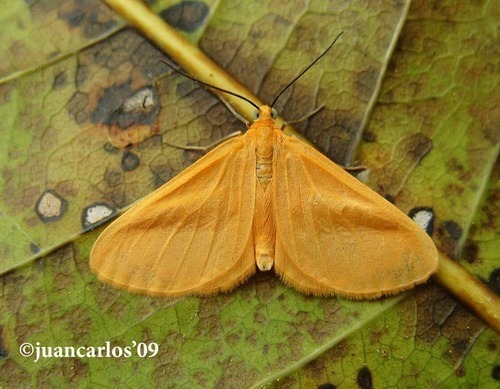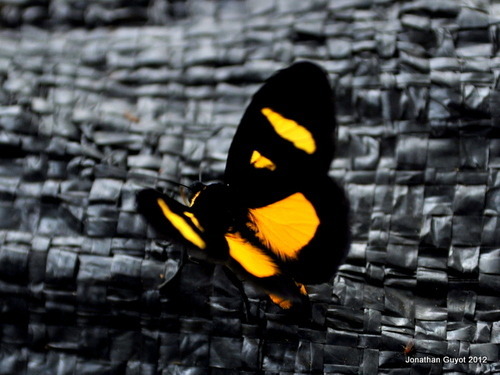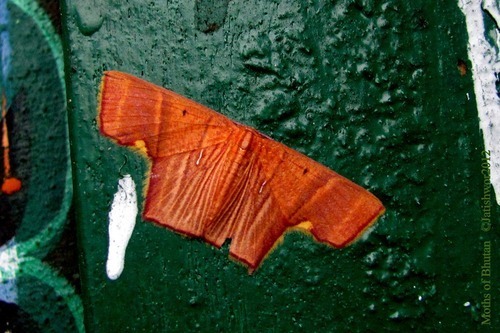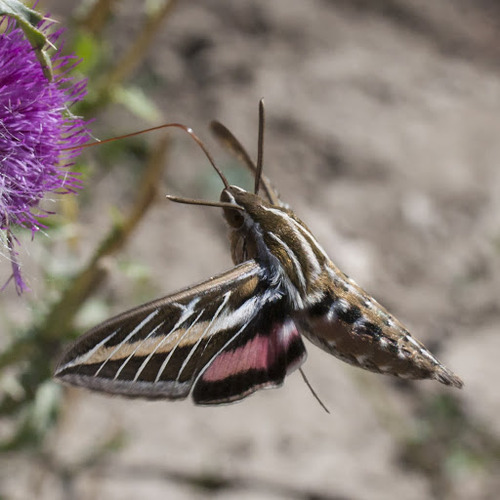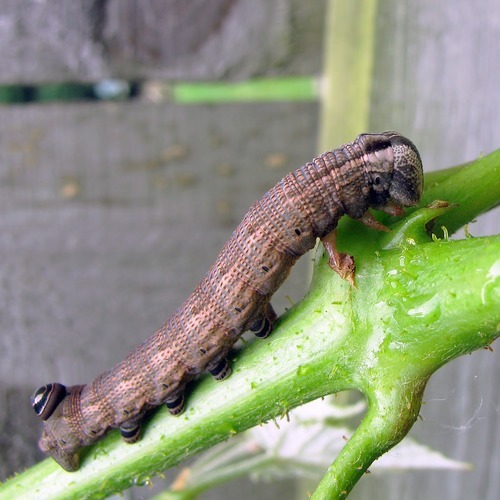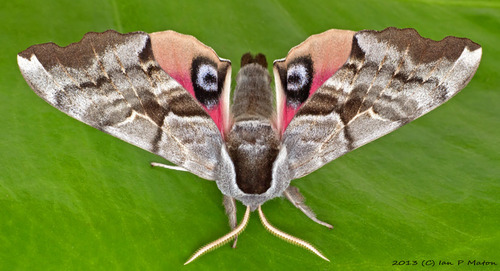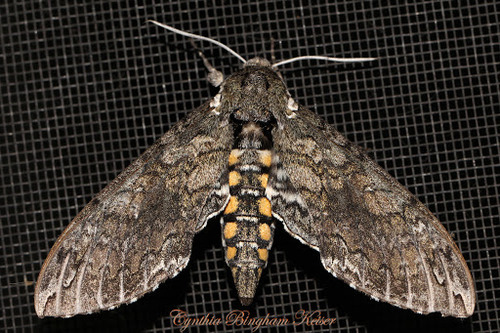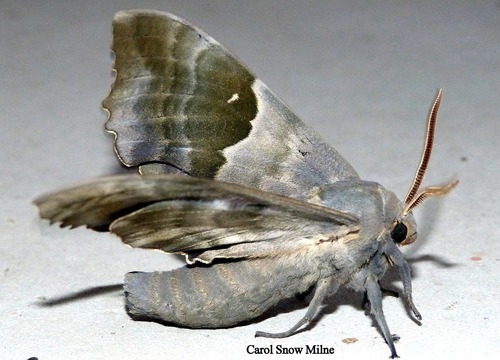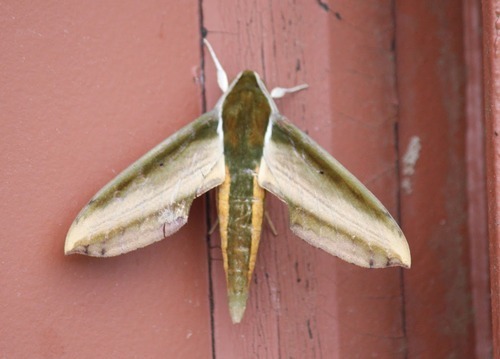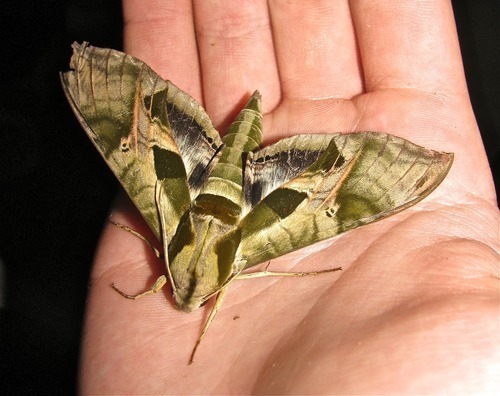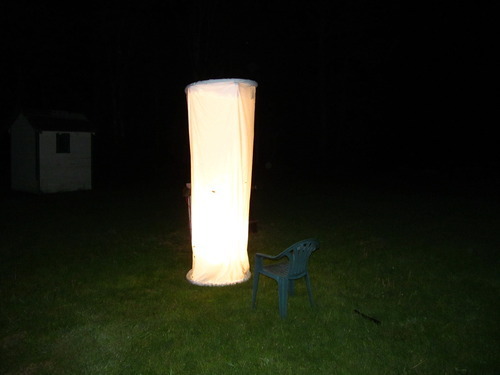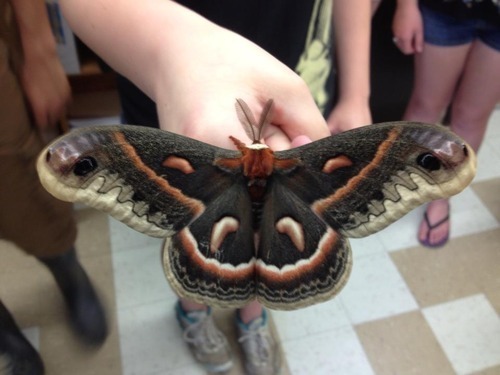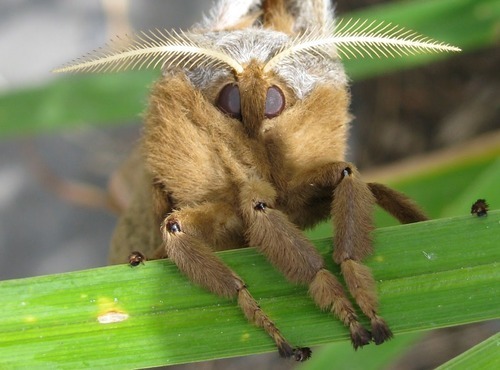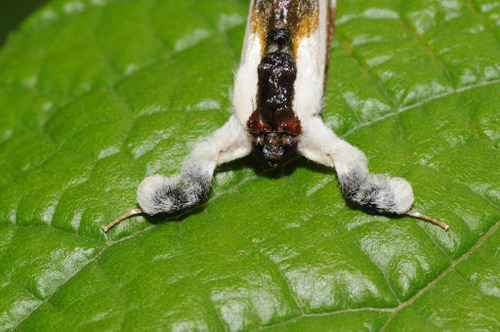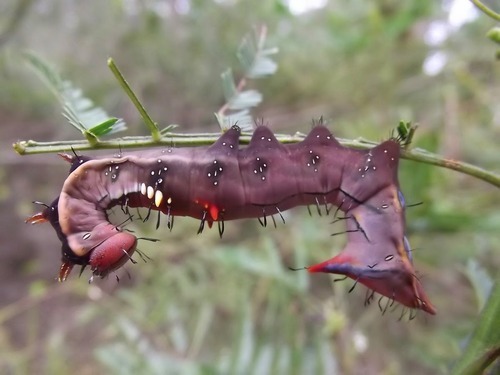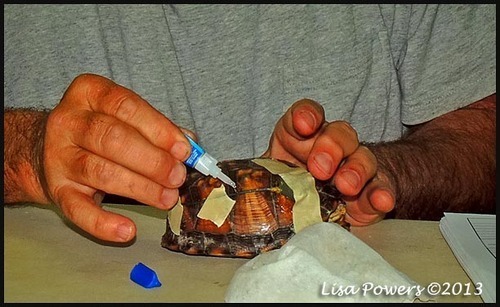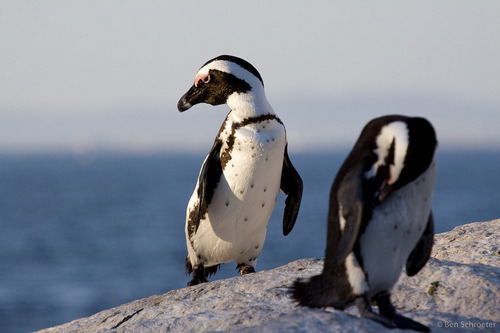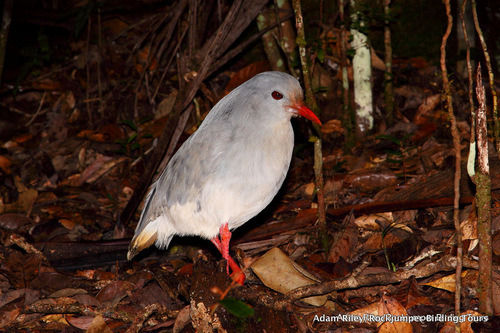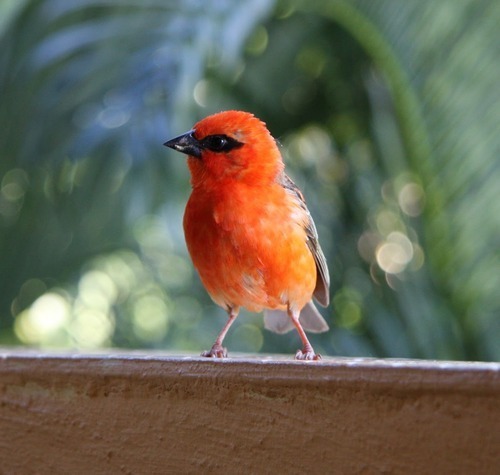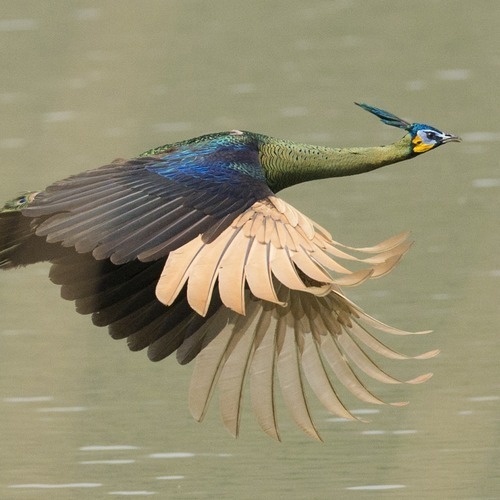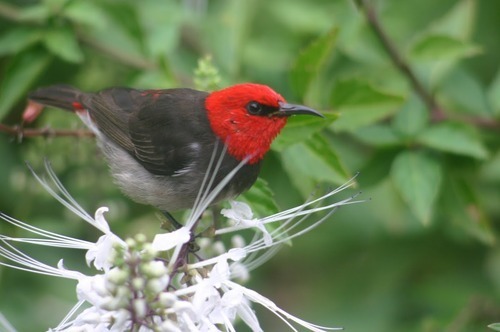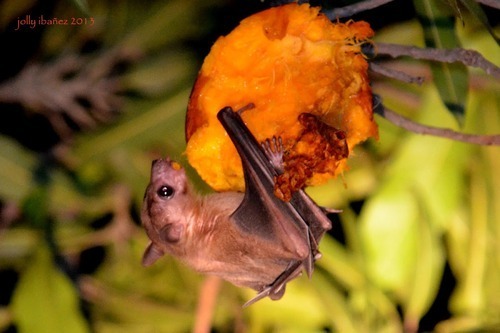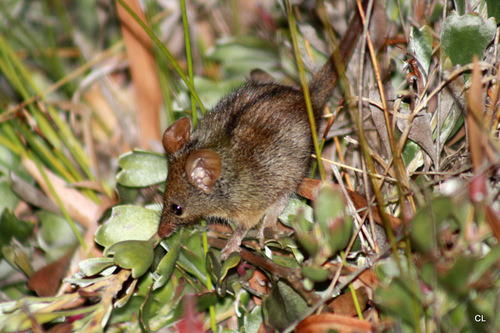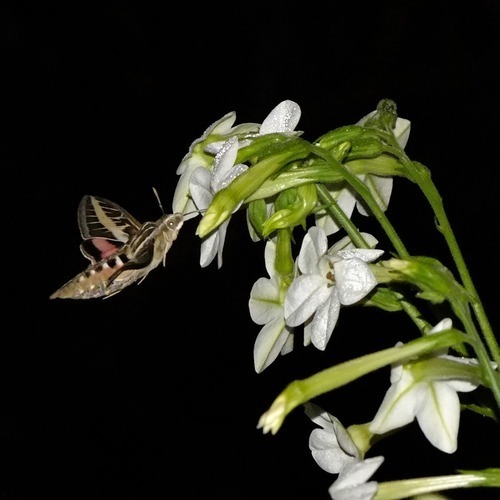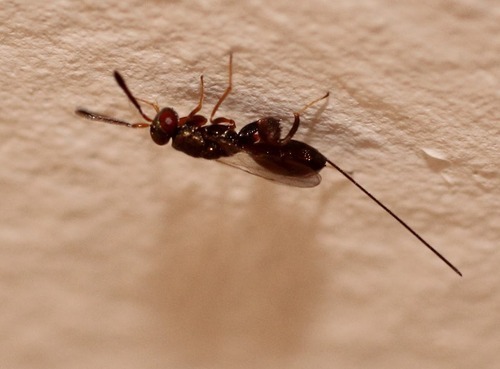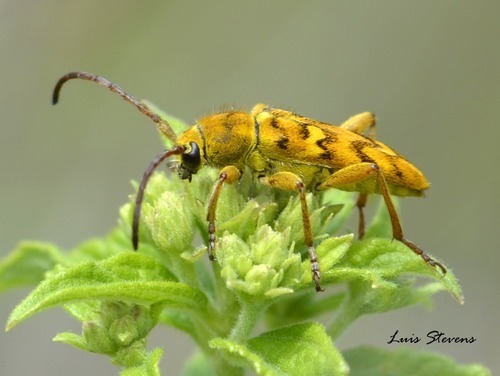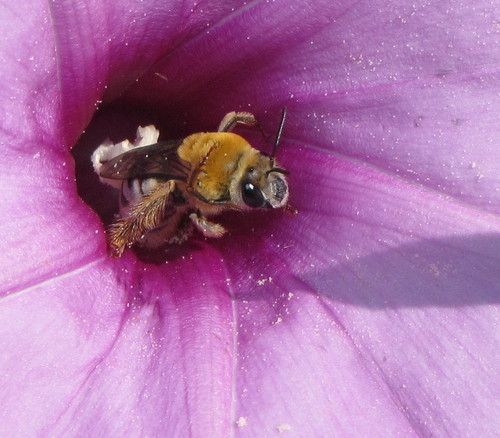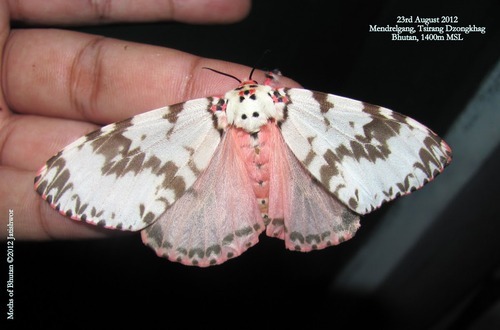
The pink gypsy moth (Lymantria mathura). Although related to the gypsy moth, Lymantria dispar, this species has not been introduced to North America.
Erebidae is a fairly new family composed of many species in the Noctuidae family, as well as well as the previous families of Arctiidae and Lymantriidae. Arctiidae and Lymantriidae have now been reduced to subfamily status under the names of Arctiinae and Lymantriinae. Since the classification is fairly recent, it is usually not widely accepted or only partially accepted.
The larval stage is the most destructive stage for native plants in North America by the gypsy moth, (Lymantria dispar).
Lymantriinae consists of moths which are very hairy in their larval stages. A moth in this subfamily which has gained nearly worldwide attention is Lymantria dispar, the Gypsy Moth. While native in Europe and Asia, the gypsy moth is considered to be a very invasive species in North America, primarily in the Northeast. This species was accidentally introduced in 1868 or 1869 by Etienne Leopold Trouvelot, an amateur lepidopterist who was interested in discovering another source of silk. However, we cannot fully blame Mr. Trouvelot, who warned entomologists of the accidental introduction, but no immediate action to subdue the introduction was taken. The need for control of this species in North America is considered of the “highest priority” according to the USDA Forest Service, State and Private forestry. The species is sexually dimorphic, which means the male and female of this species look different. The female is large, and white with grayish-black zigzags on the forewing. Near the outside of each forewing is a dark, crescent-shaped marking in the middle of the costa. The costa is the outer edge of the forewing in a moth. The female is designed solely for egg-laying, and the wings are too weak to support its body in flight. The male is smaller and brown, however it does have a similar zigzag patterning. The caterpillar is partially hairy, with six pairs of red “warts” followed by five pairs of blue “warts.” The fifth blue “wart” is sometimes hard to see as it is close to the head of the caterpillar. The larvae are known to defoliate whole trees, which kills the tree less than 20% of the time. They are detrimental to native forests, as they feed on hundreds of different plants, taking the food source of native species, in addition to defoliating forests. If you suspect you have seen a gypsy moth in North America, please verify the ID of the moth with an experienced moth-er, as many native species can appear superficially similar to Lymantria dispar. It is an arduous task to regulate invasive insects, as chemicals and biological controllers can negatively impact native species of well.

Lithosiinid tigermoth, a striking moth from the Arctiinae subfamily, in the genus Lycene.
Arctiinae is a huge subfamily mainly composed of brightly colored moths, a warning to predators that they may be distasteful. Some of these moths emit a liquid when they are threatened or handled to deter predators. In addition to this defense, tiger moths are also able to click high frequency sounds from a tympanum in their thorax to deter predators using echolocation. These tactics make them very advanced at evading predators. Some moths in the Arctiinae subfamily even appear to be wasps! There are two tribes which make up subfamily Arctiinae. Arctiini is composed of moths known as tiger moths, and Lithosiini contains moths known as lichen moths. Lichen moths are usually smaller in size, and as the name suggests, they feed exclusively on lichens. Larvae in both tribes can be quite hairy in appearance.

The yellow-banded underwing (Catocala cerogama), has striking underwings, perfect for surprising a predator
Erebinae is a extremely diverse subfamily including the spectacular genus Catocala, known as the underwings. The forewings of these moths are brownish grays, sometimes whites, which can camouflage very well with surrounding trees. The underwings are vibrant, and can be red, orange, yellow, black, and even blue! It is thought that moths in the Catocala genus have evolved such contrasting hindwings to shock a predator as it flies. In flight, the flash from the camouflaged hindwings and the striking hindwings signify as a warning to a predator.

The black witch moth (Ascalpha odorata), a moth shrouded in mystery and myth.
The subfamily Erebinae also contains a moth shrouded in myth and mystery, Ascalpha odorata, the black witch moth. Ascalpha odorata is known in Spanish as Mariposa de la Muerte, “The Butterfly of Death.” This moth is given such a daunting name due to the belief if the moth enters a home with a sick person, the sick person will die. A more specific version of this story explains the sick person will die only if the moth flies in all four corners of the house. Others believe the moth signifies a curse has been put upon someone, and even others believe you will lose your hair if the moth flies over your head! However, this moth does have some positive meaning in different places. In Hawaii, the moth is symbolized as the returning soul of a recent loved one to say, “Goodbye.” On Cat Island in the Bahamas, they are known as Money moths or Moneybats, and belief is that if they land on you, you will become rich!

Dark-banded owlet moth (Phalaenophana pyramusalis)
Herminiinae is family of small moths which are usually triangular and shape and have a snout-like appendage. They are known as litter moths, for their habits to hide in leaf litter during the day. They first may appear brown and patternless, but on closer inspection, they can have very intricate patterns!

Stigmatophora palmata, a very striking moth in the Erebidae family.
Moths in the Erebidae family are extremely diverse, with caterpillars of all hairdos, moths that mimic wasps, evade bats, and flash stunning hindwings! Moths in the Erebidae don’t only fool predators, their wide range of shapes and sizes can fool some people trying to identify them!
Sources and further reading
Quin, Mike. “The Black Witch Moth: Its Natural & Cultural History.” Retrieved July 12, 2013.
Liebhold, Sandy. “Gypsy Moth In North America” 29 Oct. 2003. Retrieved July 11, 2013
